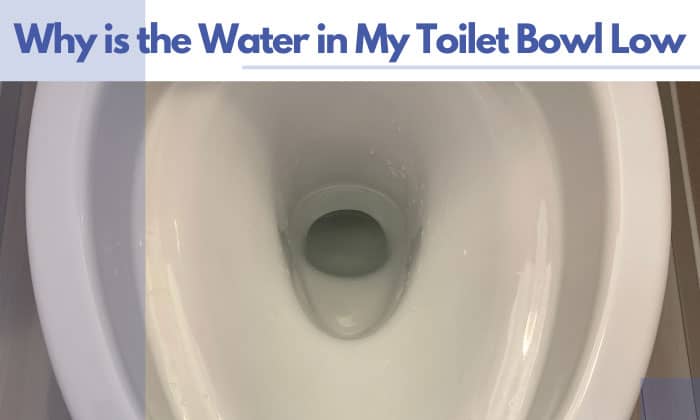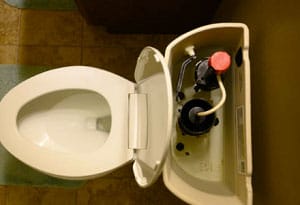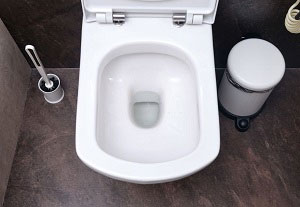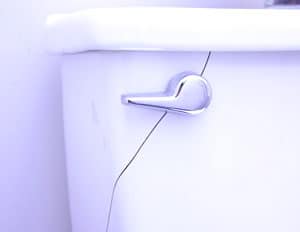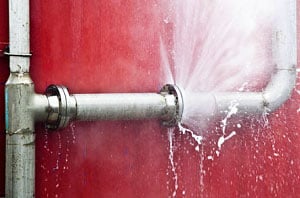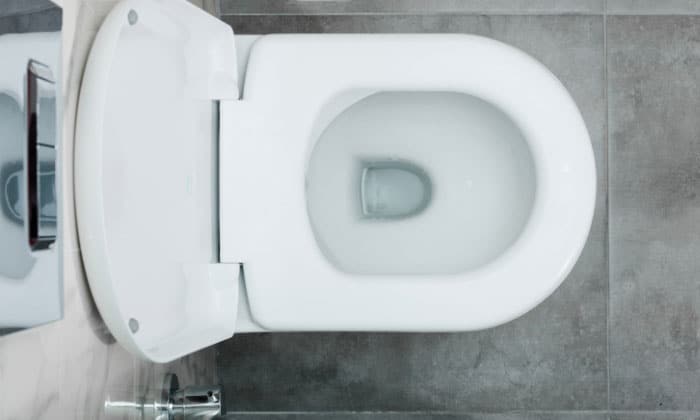After flushing our toilets, the bowl should have enough water reservoir. But upon checking it today, why is the water in my toilet bowl low?
Low water in the toilet bowl can mean a few things:
- low toilet float;
- broken refill tube;
- clogged rim jets;
- cracked toilet;
- clogged sewer vent pipes or;
- damaged plumbing pipes.
In this article, we will discuss solutions to each of these toilet problems so the water level can go back to normal.
Table of Contents
6 Reasons Why the Toilet Water Level is Low
If you wake up in the morning and suddenly see that your toilet bowl has a low water level, you might want to check first your shut-off valve if it is completely turned on.
If the water in the bowl turned back to the normal amount when you adjusted the shut-off valve, then your problem is solved. But if not, then proceed to read this article to see possible solutions.
The toilet float is responsible for regulating the water level in the tank to avoid overflowing. Since its position determines how high or low the water level will be, the float may be lower than normal.
If this is the case, there could also be no water in the toilet tank, which affects the level of it in the bowl. The solution is to adjust the float by following these easy steps:
- Open the toilet tank lid and check what kind of toilet float you have. If you have an older toilet model, it can be in the form of a ball. But if you are using a newer model, the float can be in the form of a cup (float cup).
- Both floats have a rod where they are attached. Find them beside the overflow tube and above the flush valve.
- Their rods will have an adjustment screw that we will turn using a screwdriver. Usually, if we turn the screw clockwise, we will raise the ball or cup. And if we turn it counterclockwise, that will lower the float.
In our situation, we want to turn it clockwise.
But check your toilet float as well, as sometimes, floats—depending on the type or brand—respond in different directions when turned clockwise or counterclockwise.
From the name itself, the refill tube is responsible for refilling the toilet tank with water. It is attached to the fill valve (water source) and the overflow tube which puts clean water into the bowl.
If the refill tube is not functioning properly because of damage or it is not properly attached to the fill valve and overflow tube, the water will stay in the tank, preventing its transfer to the bowl.
To replace a damaged refill tube, follow these easy instructions:
1. Turn off the shut-off valve and open the tank’s lid.
2. Flush the toilet to remove existing water in the tank.
3. Unhook the old refill tube from the fill valve and overflow tube.
4. Check the old refill tube and see if it really needs replacement or just needs cleaning. If the case is the latter, clean it using a pipe cleaner.
But if the dirt inside is already too much to remove, then proceed with the replacement.
5. Attach the new refill tube to the side of the fill valve and the other end on top of the overflow tube. Ensure that you get the positions right so the new tube fill functions well.
If the toilet bowl’s water level is too low, the rim jets might need cleaning because of too much exposure to hard water.
These rim jets or holes are inside the toilet bowl’s rim, where water from the tank passes through when we flush.
This problem is easy to deal with and the bowl’s water level will go back to normal after the clog has been removed.
- For this step, we will need either a cup of boiled white vinegar or a cup of bleach (one part bleach and 10 parts water).
- Remove the toilet tank lid and pour whichever solution you chose into the overflow tube.
- Wait for about an hour before flushing the toilet.
- Use an Allen wrench or a thick wire to remove the residue in the rim jets. You might also want to use a mirror on this part to see what you are cleaning.
- You may follow this up by cleaning the holes with a toilet cleaner and pouring the solution again into the overflow tube for the second time.
What causes the water not staying in the toilet bowl can be cracks in the toilet itself. This might also be why the toilet bowl water level drops overnight despite keeping the shut-off valve on and confirming that there are no damaged parts in the tank.
If the cracks are not too drastic (hairline cracks), we might fix them with epoxy.
- Turn off the water shut-off valve of the toilet and flush. We should completely drain the toilet dry.
- Wipe the exterior of the tank as well to ensure that there is no wet part.
- Proceed to apply the epoxy to the cracks carefully, making sure it covers every single one of them.
- Wait for at least 24 hours for the epoxy to dry. After it dries, check the cracks again to make sure that they are indeed covered.
- Once done, open the shut-off valve again to refill the toilet. This will also show you if you successfully sealed the cracks with epoxy.
If there are leaks or there is still not enough water in the toilet bowl, then the sealing process might have been unsuccessful or the cracks are simply beyond repair.
The sewer vent pipes or plumbing vent pipe is essential because it supplies air to the plumbing system, helping move water in and out to the toilet (and other plumbing fixtures!).
This pipe also keeps sewer gases away and wastewater odor escapes. So if the plumbing vent is blocked, not only are you at risk for a dirty and smelly bathroom, but your toilet bowl will also have low water levels.
To help adjust the toilet’s water level, we must clean the sewer pipe vent by calling a licensed plumber as this involves climbing the roof and using specific tools. We don’t recommend doing this by yourself since it can be unsafe.
If you have checked the:
- parts of the tank;
- the toilet itself if it has cracks and;
- the sewer vent pipes
But the water in the toilet bowl is still low, the problem might be in the plumbing pipes. Damage in the latter calls for a professional and licensed plumber. They can tell us if the pipes need repair or replacement to fix the problem.
How Do I Increase the Amount of Water in My Toilet Bowl?
If your toilet has no problems and you simply just want to increase the amount of water in the bowl, then all you have to do is follow the steps to adjust the toilet float above.
Also, depending on your toilet float ball or cup, adjusting it clockwise or counterclockwise will raise it. Once you do that, it will also increase the water in the toilet bowl.
Conclusion
The answer to why is the water in my toilet bowl low lies in the parts of the toilet tank such as a low-positioned toilet float and a damaged refill tube. If these do not fix the problem, we go to the exterior such as the dirty rim jets or the cracked toilet.
However, sometimes the problem can be clogged sewer vent pipes or damaged plumbing pipes that need professional plumbers to be cleaned and repaired.

I’m Paulk Webb, and I work as a writer for Saveourwaterrebates. I’m happy to put in the time and effort to conduct market research to identify the most pressing issues faced by households concerning their plumbing. Feel free to check out our guides to get the most informed recommendations for how to solve your problems.


